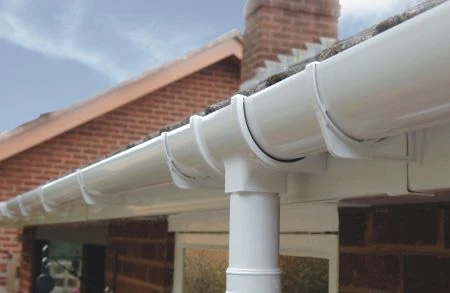gutter-downpipes1076
gutter-downpipes1076
What’s The Current Job Market For Gutter Downpipes Professionals Like?
Understanding Gutter Downpipes: Essential Components for Effective Drainage
Gutter downpipes play a pivotal role in a structure’s water management system. These vital elements help with the efficient drainage of rainwater from the roof through the gutter system and into the ground or a stormwater drainage system. Understanding the function, products, installation processes, and maintenance practices connected with gutter downpipes can help house owners, builders, and architects in making informed decisions about their water drainage systems.
What Are Gutter Downpipes?
Gutter downpipes are vertical pipelines that connect the gutter at the edge of a roof to the ground or a drainage system listed below. They serve to transport rainwater gathered in the gutters far from the building’s structure, therefore avoiding water damage, erosion, and structural issues.
Key Functions of Gutter Downpipes
- Water Diversion: Direct rainwater far from the roof and building structure.
- Foundation Protection: Minimize the threat of flooding or erosion around the foundation.
- Avoid Mold Growth: Reduce wetness levels that can result in mold and mildew.
- Manage Storm Water: Help mitigate stormwater overflow effect on the environment.
Kinds Of Gutter Downpipes
Gutter downpipes been available in numerous products and designs, each with distinct advantages and applications. Here are the most typical types:
| Type | Material | Advantages | Drawbacks |
|---|---|---|---|
| PVC Downpipes | PVC (Polyvinyl Chloride) | Lightweight, corrosion-resistant, easy to set up | Can end up being brittle in extreme temperatures |
| Metal Downpipes | Aluminum or Steel | Long lasting, lasting, aesthetic appeal | Greater preliminary expense, can corrode if not dealt with |
| Cast Iron Downpipes | Cast Iron | Extremely long lasting and strong | Heavy, pricey, requires maintenance |
| Copper Downpipes | Copper | Special appearance, long life period | High expense, can establish patina over time |
Installation of Gutter Downpipes
When setting up gutter downpipes, it is vital to follow best practices to make sure ideal efficiency. Here are some actions typically involved in the installation procedure:
- Planning the Layout: Determine the optimum placement of downpipes based on gutter configuration and building design.
- Picking the Right Size: Sizes vary, but typical diameters are 2 inches, 3 inches, or 4 inches. Pick a size that can handle the volume of rainwater expected.
- Attaching to Gutters: Securely fasten downpipes to the gutter with brackets. Make sure there are no gaps to prevent leakages.
- Directing Water Away: Ensure downpipes extend away from the structure, preferably directing water into a drainage system or rainwater harvesting tank.
- Regular Inspection: Periodically inspect downpipes for clogs, damage, or misalignment.
Tools Required for Installation
- Pipeline cutter
- Drill
- Ladder
- Determining tape
- Level
- Silicone sealant
Maintenance of Gutter Downpipes
Regular maintenance is important to lengthen the life and functionality of gutter downpipes. House owners should follow these guidelines:
- Regular Cleaning: Remove particles such as leaves, branches, and dirt from the downpipes to avoid obstructions.
- Inspect for Leaks: Inspect joints, brackets, and the pipe for leakages or damage and repair them promptly.
- Inspect throughout Heavy Rainfall: Observe the performance of downpipes throughout a storm to make sure appropriate drainage.
- Flush with Water: Occasionally flush downpipes with water to clear out any potential clogs.
Common Problems and Solutions
Gutter downpipes can experience different problems that may hamper their functionality. Below are some typical problems and their solutions:
| Problem | Option |
|---|---|
| Clogged Downpipes | Frequently clean downpipes. Use a plumber’s snake if needed. |
| Dripping Joints | Apply silicone sealant or change defective ports. |
| Misalignment | Adjust downpipe and secure it appropriately. |
| Rust or Corrosion | Change damaged sections, especially in metal downpipes. |
Frequently Asked Questions About Gutter Downpipes
Q1: How often should gutter downpipes be cleaned?A1: It is recommended to tidy downpipes at least twice a year, specifically before and after the rainy season.

Q2: Can I install gutter downpipes myself?A2: While installation can be done by DIY lovers, it’s recommended to speak with professionals for a correct setup, especially in complex roof designs or for high structures.
Q3: What are the indications that my downpipes need to be changed?A3: Common signs include frequent clogs, noticeable rust, rusting, and obvious leaks that can not be fixed.
Q4: Which type of downpipe is best for my home?A4: The best type depends upon your spending plan, visual choices, and climate. PVC is frequently the most cost-effective, while metal options might be more resilient.
Gutter downpipes are necessary parts in the overall framework of a structure’s drainage system. From guaranteeing efficient water flow to safeguarding the structural integrity of a property, their significance can not be overstated. By comprehending the types, installation procedures, maintenance requirements, and typical problems, house owners and home builders can promote a more effective rainwater management system, leading to long-lasting advantages. Routine assessment and maintenance, in conjunction with premium materials, will ensure that gutter downpipes remain functional and effective throughout their life-span.

